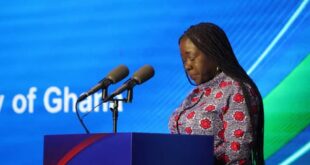The International Monetary Fund (IMF) has announced about $91 billion in financing to 80 countries, including $11.3 billion to 48 low-income countries since the onset of the pandemic in late March and as of September 15, 2020.
Out of this lending, the IMF channeled $30 billion (equivalent to SDR 21.2 billion) in financing to 69 countries through emergency lending facilities.
The Bretton Woods Institution says it provides financing to member countries experiencing actual, potential, or prospective balance of payments problems to help them rebuild their international reserves and restore conditions for strong economic growth, while correcting underlying problems.
The IMF also provides emergency financing and has massively stepped up such financing to help member countries address the immediate impact of the COVID-19 pandemic.
“Unlike development banks, the IMF does not lend for specific projects. Instead, IMF financing is meant to help member countries tackle balance of payments problems, stabilize their economies, and restore sustainable economic growth. IMF financing can also be provided in response to natural disasters or pandemics. Finally, the IMF also provides precautionary financing to help prevent and insure against future crises and continues to enhance the tools available for crisis prevention,” the IMF said.
In broad terms, the IMF has two types of lending—loans provided at nonconcessional interest rates and loans provided to low-income countries on concessional terms. Currently, concessional loans do not bear any interest.
“The IMF has responded to the COVID-19 pandemic with unprecedented speed and magnitude, making use of its current $1 trillion lending capacity.¹
“This response has entailed provision of financial assistance to countries with urgent or potential balance of payments needs with the aim to help protect the lives and livelihoods of people, especially the most vulnerable. Between the onset of the pandemic in late March and September 15, 2020, about $91 billion (or SDR 64 billion) has been committed to 80 member countries, of which $30 billion was emergency financing (RCF and RFI),” it stressed.
The Board has temporarily streamlined the internal processes to allow the IMF to respond more quickly to members’ requests for emergency assistance during the COVID-19 pandemic, and in many cases the IMF made financing available within weeks of a request for emergency financing.
In addition, the Board has also temporarily suspended the application of high-access procedures for RCF requests.
Policy safeguards were introduced in August 2020 to help mitigate financial risks from a member having high levels of combined high access from both the Poverty Reduction and Growth Trust and General Resources Account lending facilities.
Under the new policy, safeguards apply to any Fund member with combined access to GRA and PRGT resources that exceeds quota-based thresholds set at the same level that triggers the exceptional access framework of the GRA.
On April 13, 2020, the IMF Executive Board approved the disbursement of US$1 billion to Ghana to be drawn under the Rapid Credit Facility to deal with the ravages of the pandemic.
The disbursement, according to the IMF would help address the urgent fiscal and balance of payments needs that Ghana is facing, improve confidence, and catalyze support from other development partners.
The COVID-19 pandemic is already impacting Ghana severely, the IMF noted.
Growth was slowing down, financial conditions have tightened, and the exchange rate was under pressure.
“This has resulted in large government and external financing needs. The authorities have timely and proactively responded to contain the spread of the COVID-19 pandemic in Ghana and support affected households and firms.
“The IMF continues to monitor Ghana’s situation closely and stands ready to provide policy advice and further support as needed.”
 Home Of Ghana News Ghana News, Entertainment And More
Home Of Ghana News Ghana News, Entertainment And More





